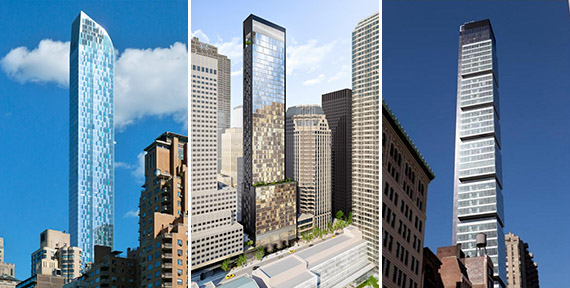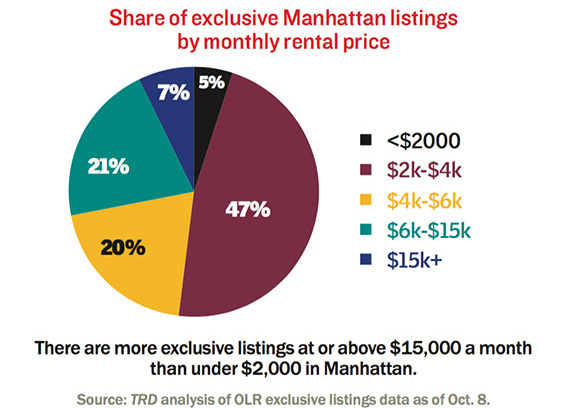The prospective residential conversion of the Sony Building at 550 Madison Avenue was once a symbol of the luxury property boom. With a $150 million penthouse planned for the top floors, it was slated to shatter Manhattan price records.
But the revelation Monday that the project had been nixed by developer the Chetrit Group – and the building sold for more than $1.3 billion – is just one of many signs that the boom that inspired it is quickly becoming a thing of the past, industry insiders told The Real Deal.
Some say that Chetrit is likely to be just one in a string of developers to ultimately pull the plug on condo projects before they even begin, in a bid to avoid falling victim to a slowdown at the top end of the residential market. In some cases, they may be forced to do so due to the lack of available condominium financing, which has dried up significantly in the past few months as some of the country’s largest banks reduce their exposure to the luxury market.
“I’m sure everybody who isn’t already moving forward on a condo is thinking again about whether this is the right time,” said finance broker Andy Singer of Singer & Bassuk. “That’s going to cut out a lot of the product that isn’t already under construction.”
And the city’s most ambitious projects are likely the most vulnerable.
“The bigger they are, the most scrutiny they’ll get,” said Leonard Steinberg, president of brokerage Compass. “Where there’s the potential for massive losses, there will be a second look taken.”
Many prominent developers are still said to be in the market for condo construction financing, including Michael Shvo’s 125 Greenwich Street, Extell Development’sCentral Park tower on West 57th Street and HFZ Capital Group’s large Chelsea project on West 18th Street. While some may manage to get financing from the banks, many may have to seek alternate sources of financing, whether it be foreign capital, crowd-funding or EB-5 financing.
“They can do everything right but if they don’t have a construction loan, it doesn’t matter,” said Robin Schneiderman of Halstead Property Development Marketing. “If that market turns off, some of these deals are just going to sit.”
But calling time on projects comes with its own set of problems for developers, who often have huge carrying costs associated with mothballing projects, and for brokers, who count on these projects selling in order to get paid.
In some ways, Chetrit and his partners, which included David Bistricer’s Clipper Equity, had the perfect fallback plan if the condo market went south. By purchasing a major office trophy such as the Sony building, the company ensured that it would still have an extremely valuable — and profitable — asset in the event that the condo market no longer appeared such a safe bet.
And Chetrit is not the only developer to have made use of a fallback strategy in recent months.
Developer Steve Witkoff announced earlier this year that he was hitting the brakes on plans to convert the Park Lane Hotel on Central Park South into luxury condos. Instead, he and his partners, who include Harry Macklowe and Douglas Elliman head Howard Lorber, have considered a renovation of the existing hotel. Since the asset is income-producing, the partners haven’t been forced to move ahead with the condo plan.
“The fact of the matter is, the velocity is not what it was,” Witkoff said in an interview with Bloomberg News in January. “Because we have a cash flow, we have the flexibility to wait.”
But not all developers can count on alternative uses for their assets. In the case of ground-up construction, developers can be left holding the bag – having to deal with loan payments and interest indefinitely – if the banks won’t fund a project.
“When the risk profile changes, they go to plan B,” said appraiser Jonathan Miller. “Chetrit was fortunate to have a Plan B, but I’m not sure everyone has one.”
Those who find themselves without a viable plan B must have the capital resources to hang in there, or risk losing their properties altogether.
Developer Ian Bruce Eichner learned that lesson the hard way – and for the second time – when the Durst Organization filed to foreclose on his prospective residential site at 1800 Park Avenue in February after he wasn’t able to secure construction financing.
In order to survive a dry lending cycle, developers have to keep their debt levels low, have patient capital partners and a cooperative interest rate environment. They should also look for ways to monetize the asset in the meantime, whether it means asking an existing tenant to remain on for another year or finding an alternate use, Singer said.
“Just because you buy real estate, doesn’t mean you have a God-given right to make a profit,” added luxury broker Donna Olshan. “Timing is everything. If the timing goes against you, you’ve got to have the power or the resources to hang in there.”
New development: a broker’s gamble
For the agents who market these projects, there are no guarantees – and a shift in a developer’s strategy can mean a big hit to their balance sheets. Elliman this week lost a potentially massive payday on a $1.8 billion sellout when Chetrit flipped the script.
In most scenarios, brokers don’t see a penny of their commissions until a unit closes. If a deal is killed, the work they put in during the pre-development phase goes for naught. The prospect makes the new development market a much scarier proposition than it was even a few months ago.
“It’s a sad day when a building gets canceled,” Steinberg said, “but the natural forces of the market are at play here. I’m sure they did a lot of work on that building and it must be devastating for them.”
Some industry veterans said many development marketers are well-prepared for these kinds of surprises and have accounted for them in their financial projections.
“I think the development marketing companies are pretty good at reading tea leaves with their clients and don’t count this as earned money,” Miller said. “They know they’re taking on risk and incurring costs that aren’t necessarily going to be reimbursed, with the assumption that the project is going to move forward. They have to understand that to play in this sandbox.”
Ultimately, a slowdown in the number of condo projects being financed may be good news for the market, Singer said.
“This is the type of change that begins to alter the cycle,” he said. “If new production slows down or stops as it seems to be doing, it gives the market a chance to absorb the existing product. Anyone who thinks they can wait three years and get a 50 percent discount on an apartment is going to be wrong.”


























